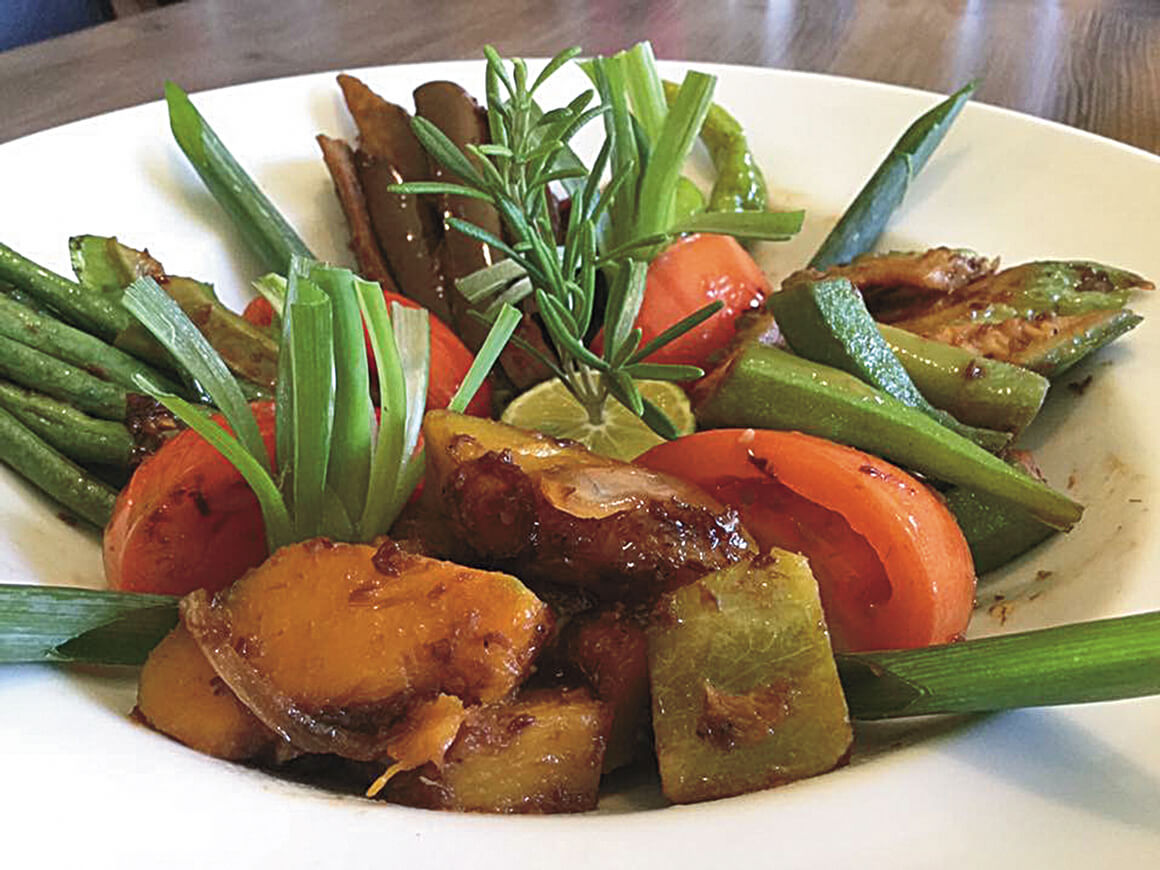
Filipino food rocks! We Filipinos are known for our positive values, sense of hospitality, being hard-working, and our ability to face whatever challenges that life brings with a smile in our face! On top of that, we are also known to have a great passion for food—Pinoy food—to the point of considering eating as a hobby! What I find amazing is that when Filipinos prepare their favorite food you seldom see them having to use any kind of a recipe—and I think that is a testament of the legacy that is perhaps passed on by family members.
Of course, the last statement does not apply to all; although I venture to guess that it covers the majority. Every time you visit a Filipino home, whether here in the U.S. or the homeland, and hungry or not, you will always hear (without exception) from the host, “come eat—we get plenty food!” And that is Filipino hospitality! Somehow the host family knows exactly your favorite food to serve, and I can certainly attest to that, having been invited to many Filipino gatherings.
Well, let’s talk about my favorite Filipino foods and I hope it’s your favorite too. What are your comfort Pinoy foods? What are the foods that you find irresistible? Well, let me share a few of my favorite Filipino foods that will knock your socks off!

Photo courtesy of Vince Bagoyo
Tortang Talong (Filipino Eggplant Omelet) – This is an eggplant omelet wherein grilled eggplants are soaked in a beaten egg mixture then fried. This is a simple yet delicious Filipino recipe that you can enjoy anytime of the day, especially for breakfast. It is best eaten with steamed white rice and tomato with anchovies or patis. This dish is a simple, comforting, everyday meal. It remains my top request whenever I go to a Filipino restaurant or to a family gathering. This dish will surely satisfy your palette.

Photo courtesy of Vince Bagoyo
Veggie Sinigang (vegetable soup) – When you feel like eating healthy Filipino food without the trappings of pork or beef that is normally in the Filipino sinigang dish, you may want to try this dish with veggies only—I can assure you that you will love this veggie sinigang dish. I experimented with this dish recently and I found it to be comforting and quite healthy. Sinigang is a Filipino soup or stew characterized by its sour and savory taste. By tradition, the souring ingredient of this dish comes from fresh tamarind fruit, calamansi, or kamias. This particular dish was popularized by the Ilokanos of northern Luzon. Sinigang is an indigenous Filipino dish believed to have been influenced by the Philippine’s neighboring countries. In fact, sinigang resembles that of the sour based cuisine of other Southeast Asian countries like Malaysia’s “Singgang,” Indonesia’s “Sayur Asam” and Thailand’s “Tom Yum.” This fabulous dish consists of bok choy, eggplant, fresh green beans, daikon radish, tomato, chopped onion, a few slices of ginger, chicken broth, and few dices of chopped tofu. Of course, it is best served with a condiment composed of fish sauce (Patis) and lots of hot chili pepper. So, if you want to try a Filipino healthy food without compromising the authenticity of sinigang dish—this veggie sinigang will certainly open new opportunities for a healthy Filipino food alternative!

Photo: Chef Joaquin Belmonte | Food Plating: Richard Gaoiran of Tante’s Island Cuisine
Pinakbet (mixed vegetable dish) – This dish is one of my favorite Filipino foods which always reminds me of my childhood. I have been told by my Ilokano friends that this dish originated and was popularized in the Ilocos region of the Philippines and you will always find this dish in every Filipino party or family gatherings. Just recently, I have been experimenting cooking this pinakbet dish without the usual pork or bagnet or the use of lechon kawali ingredients in order to make a healthy dish. Instead, I have used shrimps or tofu, and chicken broth. What is pinakbet? There are as many recipes of this dish as there are cooks, some Ilokanos claim that only the Tagalog version of the dish includes squash, others say otherwise because, like most regional dishes with a peasant origin, pinakbet is really about cooking with whatever ingredients are on hand. Therefore, although there are vegetables that are considered traditional for cooking pinakbet—like ampalaya (bitter melon), mallunggay pods and okra—it is not the presence of all traditional pinakbet vegetables in the dish that makes it pinakbet. Rather, it is about how it is cooked and how it tastes. And many Filipinos judge the authenticity of a dish not so much by cultural or historical standards, but by the way their mothers and grandmothers cooked them to the point that they will insist that a recipe is wrong unless it is exactly the same as their mother’s and grandmother’s. There are even some who say that unless you’re a true-blue Ilokano, you can’t cook Ilokano dishes properly! Let’s live healthy—and try to cook healthy Filipino food with authentic flavor—and I promise you will feel so much better!
